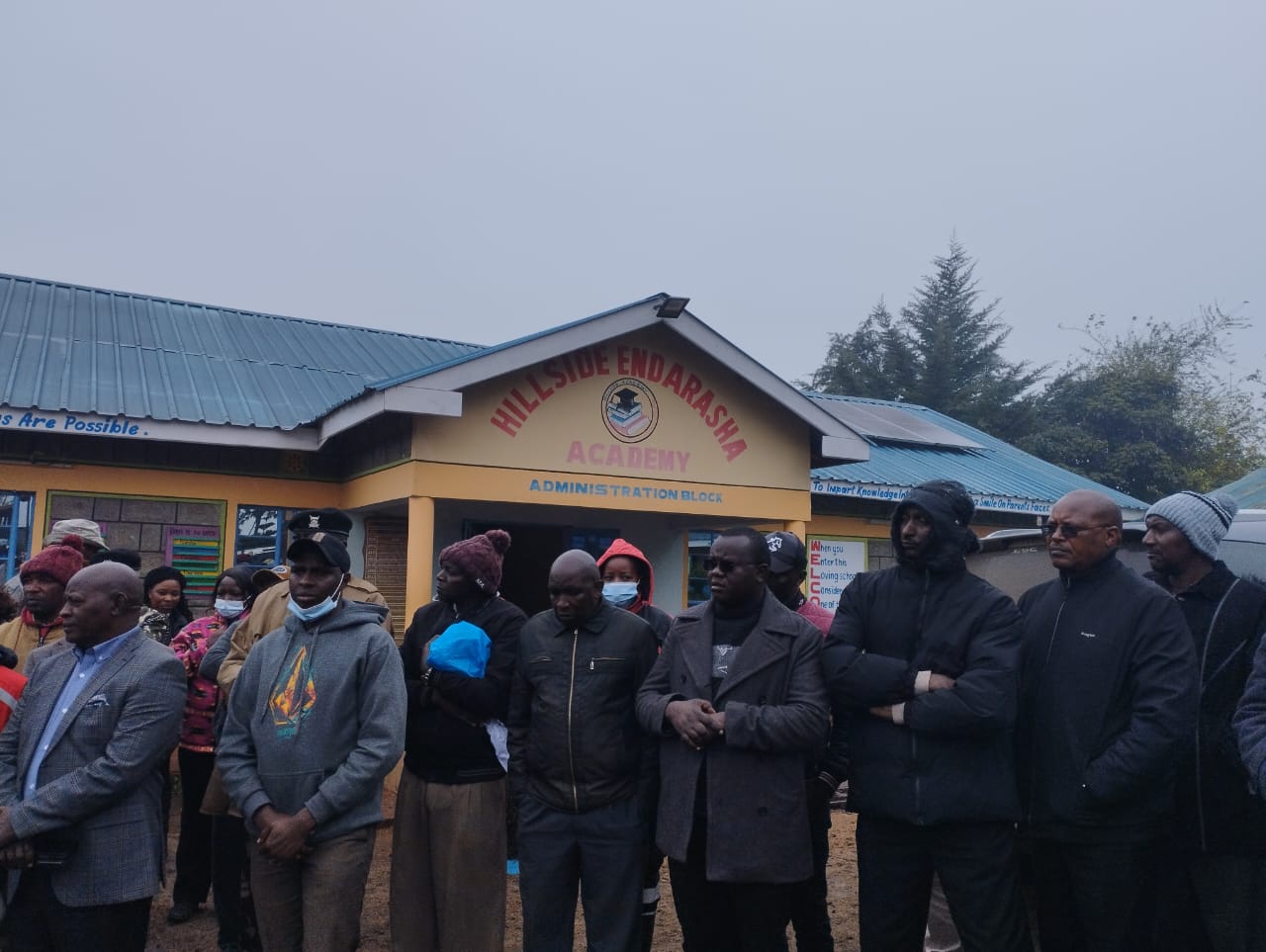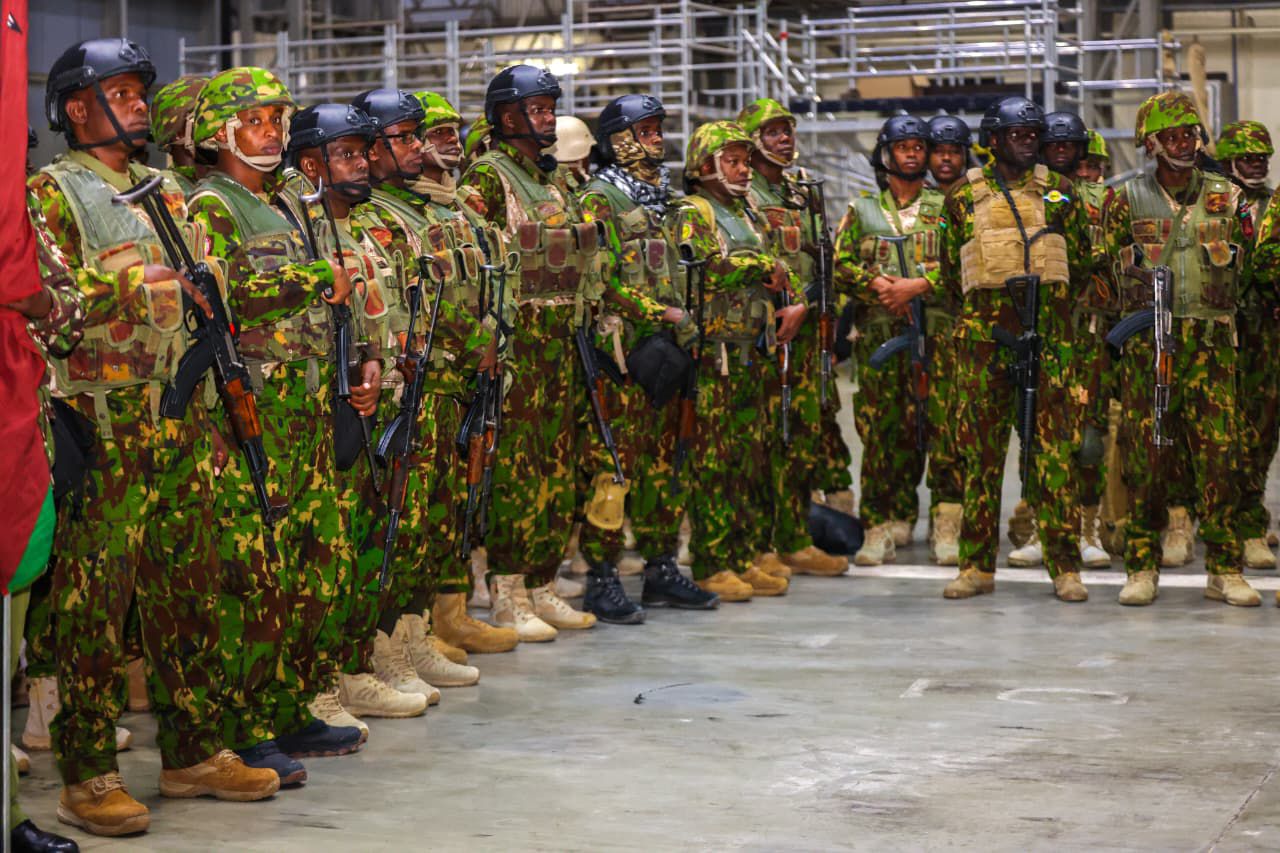Audit exposes govt failures in implementing fire safety measures in schools

Although 40 schools had fire extinguishers, Gathungu said they were unevenly distributed, with the administration blocks having the highest number and school halls the least.
In the wake of fire incidents in schools, including a recent tragic incident that has claimed 21 lives, a report by Auditor General Nancy Gathungu has revealed significant shortcomings in the government's implementation of fire safety measures.
The 2020 audit scrutinised the Ministry of Education's (MoE) efforts to equip secondary schools to handle fire incidents between 2014 and 2019.
More To Read
- Hillside Academy fire inquest: Witnesses recount frantic efforts to rescue trapped pupils
- Heartbroken Endarasha Academy parents left in limbo as fire inquest stalls over missing DCI files
- Families of 21 boys killed in Hillside dorm fire sue state and school for negligence, cite violation of right to life
- Community devastated after fire claims child’s life, destroys homes in Kamukunji’s Kinyago Kanuku
- One year on, parents of Hillside Endarasha fire victims still demand justice
- Property worth millions destroyed as fire razes shops at Yare Business Park in Eastleigh
The audit, which covered 42 secondary schools across Machakos, Siaya, Uasin Gishu, Kajiado, and Kiambu counties, found widespread inadequacies in fire safety preparedness.
According to the report, the sampled schools had insufficient infrastructure, inadequate fire safety training, and limited guidance and counselling services.
Gathungu highlighted that most of the sampled schools were found to lack essential firefighting equipment and facilities. Additionally, no school had posted evacuation maps on buildings as required by the manual.
“Physical verification in the 42 schools indicated that none had evacuation maps posted, and many lacked proper firefighting tools like fire extinguishers and alarms in key areas such as dormitories and kitchens,” reads the report.
Although 40 schools had fire extinguishers, Gathungu said they were unevenly distributed, with the administration blocks having the highest number and school halls the least.
"Five schools had fire blankets in the laboratory, while six had them in the kitchen. Five schools had fire alarms installed in the administration block, six in the dormitories, and one in the kitchen. Further, some schools had a variety of other types of firefighting equipment, such as hose reels, smoke detectors, sirens, escape ladders, automatic fire extinguishers, fireballs, sand buckets and fire alarms," Gathungu said.
According to the audit, schools were not able to acquire all the required firefighting equipment and tools due to a lack of a functional subcommittee to inform the school management on the need for prioritising fire safety preparedness activities in schools.
The audit also highlighted a lack of fire assembly points in several schools. Of the 42 schools visited, only 25 had assembly points large enough to accommodate the student population.
Even so, the Fire Risk Reduction Rules, 2007 Section 24 (1), require every occupier to identify a location where everyone should assemble in the event of a fire incident.
Barbed wire or fencing obstructed the points in three cases, making them difficult to access during an emergency, according to the audit.
 Interior CS Interior Kithure Kindiki and Education PS Belio Kipsang' at Hillside Endarasha Academy, Nyeri County following at tragic fire incident on September 6, 2024. (Photo: Ministry of Interior and National Administration)
Interior CS Interior Kithure Kindiki and Education PS Belio Kipsang' at Hillside Endarasha Academy, Nyeri County following at tragic fire incident on September 6, 2024. (Photo: Ministry of Interior and National Administration)
"The lack of, or inappropriate, fire assembly points in schools was a result of the school management not being sensitised on the identification and design of fire assembly points. Lack of a functional fire assembly point is likely to lead to confusion on where to assemble in the event of a fire, and some students and staff might end up being trapped in buildings, resulting in loss of lives or serious injuries," Gathungu said.
The report also raised concerns over improper construction practices in schools. In 22 of the schools, doors in classrooms opened inwards, posing a significant risk during an emergency.
Section 6.2 of the manual for schools in Kenya requires that in every classroom and dormitory, the doorways should open outwards.
However, five out of the 40 schools sampled had doors opening inward in the dormitory.
The auditor warned that in the event of a fire, students are likely to lock themselves from the inside of the buildings as they struggle to get out, given the population in the schools.
"Students may struggle to exit if doors open inwards, especially in the panic of a fire emergency," the report warned.
Gathungu also noted that congestion in classrooms and dormitories was another key issue. According to the Ministry of Education, beds should either be single or double-decker, and the spacing between the beds should be at least 1.2 metres with a pathway space of not less than two metres.
However, the audit revealed that six schools had triple-decker beds, while 34 boarding schools had double-decker beds without the required spacing.
Additionally, out of the 40 schools, 30 had more students than their registration certificates allowed, with one school exceeding its capacity by 519 students.
"Most of the dormitories were congested, which was attributed to the government introducing 100 per cent transition of students in the year 2017. Schools are therefore congested, and this increases the risk of loss of life in the event of a fire," reads the report.

Parents wait in agony and pain to learn the whereabouts of their children after a fire claimed the lives of nearly 17 students at Endarasha Hill Academy in Nyeri on Thursday, September 5, 2024. (Photo: Handout)
The audit also revealed that most schools lacked functional safety subcommittees to address fire safety. The report attributed this failure to inadequate follow-up by the MoE.
"None of the sampled schools had a proper composition for these committees, and in 71% of cases, there was no fire safety committee at all. Lack or inadequate composition of a safety subcommittee was attributed to limited follow-up by the MoE on the need for safety committees," reads the report.
The report also pointed out the absence of collaboration between schools and county fire officers as a major concern.
According to the report, only two schools had invited local fire officers to conduct fire drills and give safety talks, which is a requirement according to the Safety Manual for Schools.
"This lack of training meant that most schools were not adequately prepared to respond to fire incidents," Gathungu said.
The report also criticised the guidance and counselling services in schools, which are meant to address indiscipline, a major cause of school fires.
Although all 42 schools had guidance and counselling departments, Gathungu noted that the Ministry had not provided clear guidelines on how to implement these services effectively.
“Out of the 42 schools, 31 lacked qualified guidance and counselling teachers, and the few counsellors available were overwhelmed by the student population,” reads the report.
Additionally, only 25 schools had secluded rooms for counselling, and only 24 had lockable cabinets to ensure confidentiality, leading students to avoid seeking help.
 Flames engulf the Ja dormitory at Njia Boys Secondary School in Igembe, Meru County. (Photo: Handout)
Flames engulf the Ja dormitory at Njia Boys Secondary School in Igembe, Meru County. (Photo: Handout)Flames engulf the Ja dormitory at Njia Boys Secondary School in Igembe, Meru County. (Photo: Handout)
Top Stories Today













































